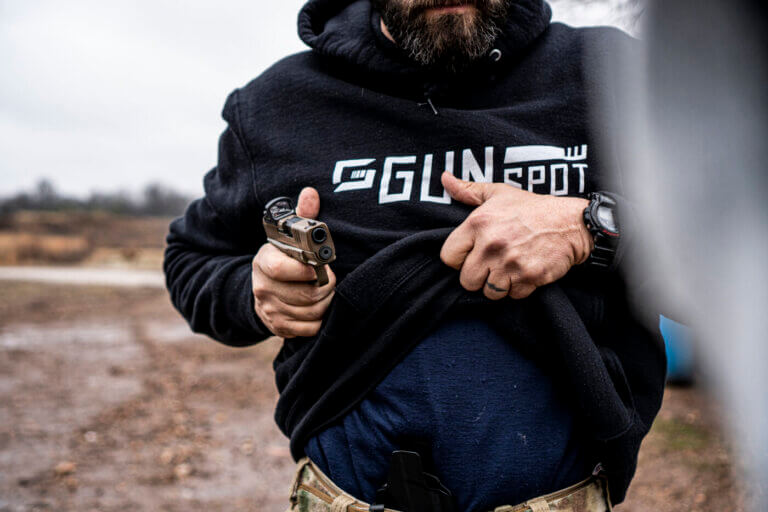
It will be networkable with air defense assets, but feature less integration overall than TLS-BCT. This is to include both a longer-range variant of the TLS-BCT operated by eight crew, and a separate HEDEA defensive jamming system used to misguide incoming drones, missiles and artillery shells-likely intended to protect headquarters and EW units from precision attacks. Reportedly, MFEW-AL could be integrated into additional types of drones.įurthermore, there’s a rear-area system being developed called the TLS-Echelon Above Brigades (TLS-EAB).

Likely, this could be used to pinpoint activity by wireless or cellular comms, provide rapid response jamming, or conduct EW missions close to-or over enemy-lines without risking crew lives.

The Army also plans to field a large Multi-function Electronic Warfare (MFEW-AL) pod on its MQ-1C Gray Eagle combat drone to provide electronic intelligence and attack support.
#ENEMY GUN JAM PORTABLE#
The Strykers, AMPV and portable TLS assigned to brigades are the forward, tactical layer under the designation TLS-BCT. The Terrestrial Layer System actually has several layers of its own. The National Guard units will receive these EW systems as they are replaced with TLS. Longer-range signal intelligence is also performed by the General Dynamics AN/MLQ-44A Prophet system mounted on an M1165 up-armored Humvee. Until TLS is fielded, Army electronic warfare units will use Stryker and Flyer72 trucks equipped with Tactical Electronic Warfare System (TEWS). Starting this year, the service also plans to form an EW company for each of its divisions corps headquarters by 20.īy late 2022, sixteen brigades had stood up the new EW platoons, which are nested in the brigade’s Military Intelligence company. The Army has also formed five EW platoons and one EW company for its Special Forces Groups and the 75 thRanger Regiment respectively.

The Army also eventually intends to field a lighter, cheaper backpackable system, for its light infantry and airborne brigades. Now the Army plans for each of its 31 combat brigades (or BCTs) to have their own dedicated platoon of either Stryker or AMPV vehicles equipped with TLS, depending on whether those brigades use tracked Bradleys or Strykers. They also originally planned to spend $201 million to acquire 24 more TLS-BCT systems in 2024, but that funding has been downsized to another $84.6 million. The Army has requested $84.6 million to procure six more TLS-equipped Strykers in 2023. They are slated to replace a menagerie of support vehicles based on the Vietnam War-era M113 APC, boasting 78% more internal volume and greatly improved protection. The 40-ton multi-purpose vehicles are based on the turretless hull of the Bradley fighting vehicle, and only began operational service in March of 2023 with the U.S.’s 1 st Armored Brigade.
#ENEMY GUN JAM INSTALL#
Lockheed’s concept art suggests that these vehicles may mount three dome or pod-shaped antennas over the rear hull, as well as additional arrays.īut in April, the Pentagon also gave Lockheed $37.4 million to sketch out plans to install TLS on two factory-fresh AMPV tracked fighting vehicles as well. Those awards supplement $58.9 million awarded to Lockheed last July for the work.Īn operational test of the Stryker TLS is planned for around September, 2023. These are specifically the 18-ton M1133 armored ambulance model, due to its extra electrical-generating capacity. In March and April respectively, they awarded Lockheed-Martin $33.6 million and $35.4 million to install TLS on three of its eight-wheeled Stryker troop-carrier vehicles at a facility in Syracuse, NY.

In development for several years, the Pentagon seriously stepped up with funding over the last month. Play icon The triangle icon that indicates to play They’re integrated into an open-architecture system using common standards (CMOSS) that should allow easy future updates. In other words, TLS is a suite of ground-based electronic warfare systems-including signals intelligence (both for listening in on enemy communications, as well as identifying and geolocating transmitters), electronic attack (jamming and satellite navigation spoofing) and cyberwarfare capabilities-that were formerly on separate platforms. Army’s most important modernization programs, resulting in a new fleet of tracked and wheeled armored vehicles that will help spy on and jam enemy communications, hack into their computers, throw off the aim of incoming missiles, smart bombs and guided artillery projectiles, and bring hostile surveillance and kamikaze drones crashing to the ground without firing a shot. Few institutions can devise opaque acronyms like the military, and even then, the ‘Terrestrial Layer System’ (TLS) is a doozy.īut don’t let that fool you-it may be one of the U.S.


 0 kommentar(er)
0 kommentar(er)
